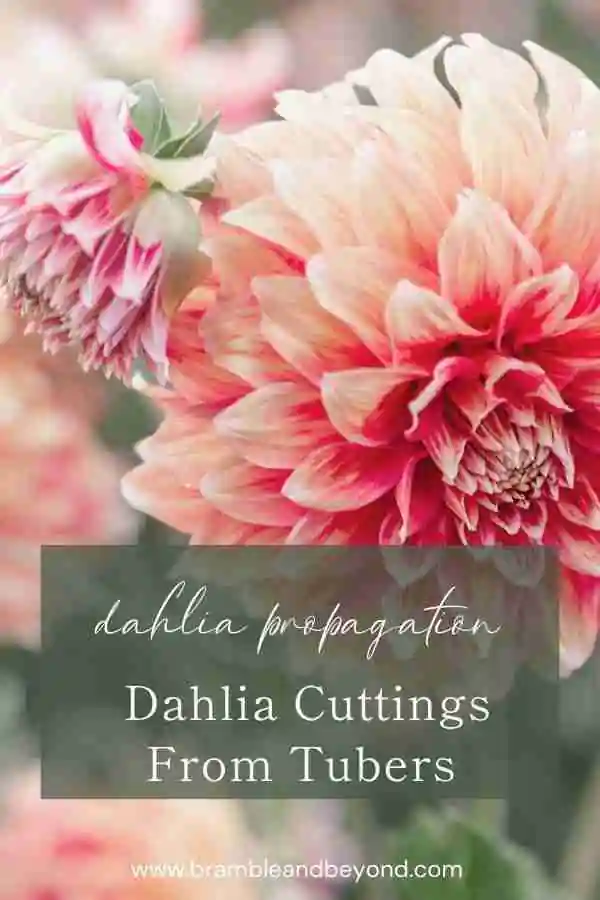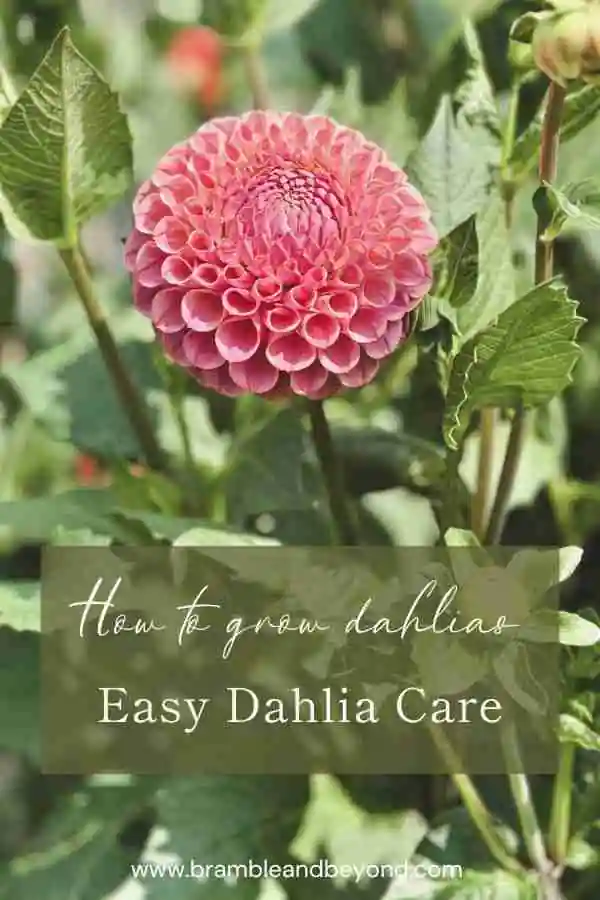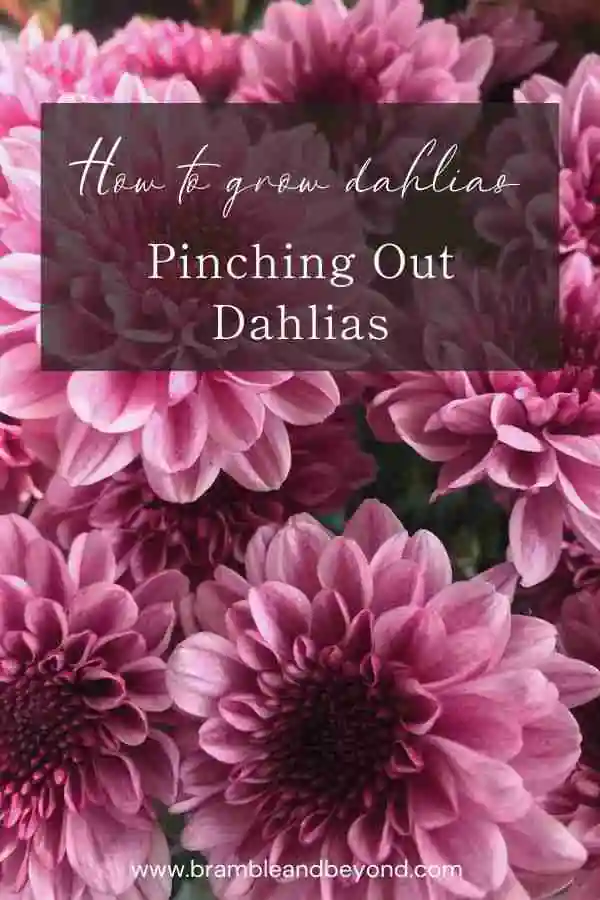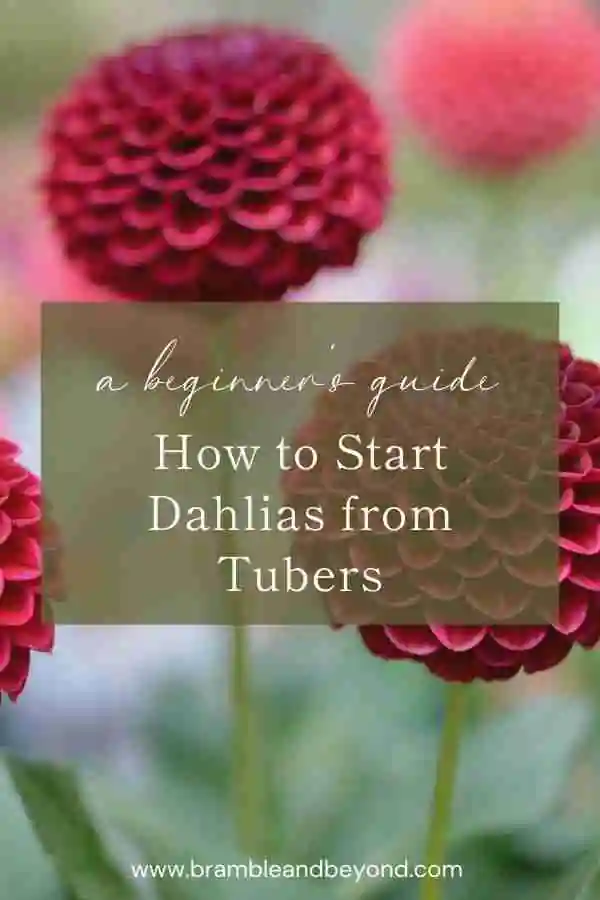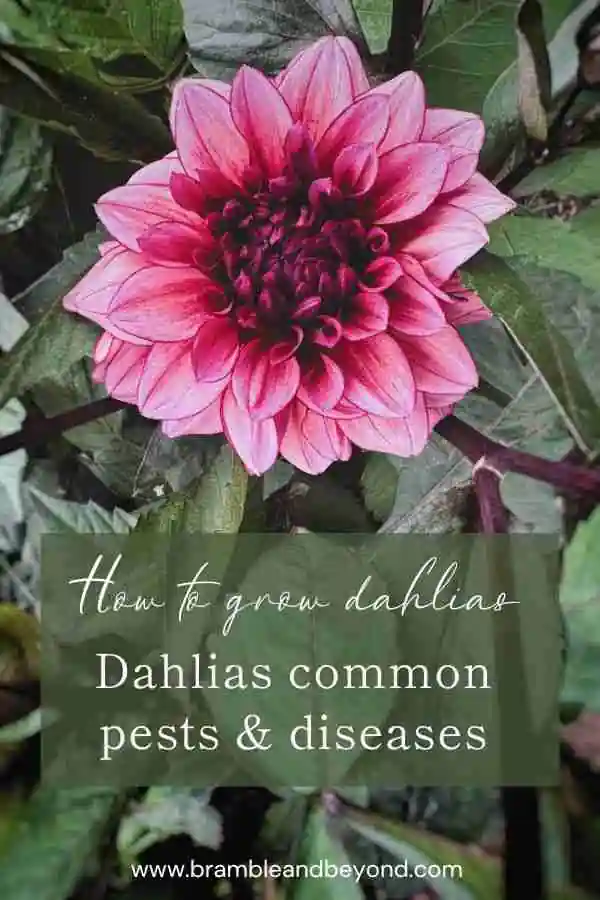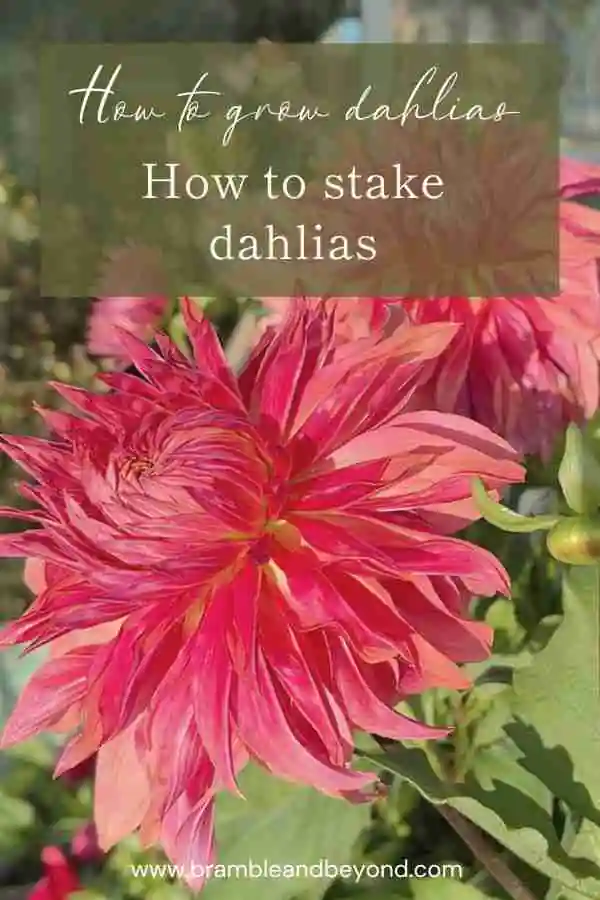Disclosure: This post may contain affiliate links, meaning I get commission if you decide to make a purchase through my links, at no cost to you. Please read my Affiliate Disclosure for more information.
If you’re an environmentally conscious gardener looking to add a splash of colour to your garden, dahlias are an excellent choice. These beautiful flowers come in a variety of shapes and sizes, and are relatively easy to grow. But did you know you can grow your own dahlias from cuttings? In this post, we’ll show you how to take dahlia cuttings and propagate them into new plants.
If you prefer to watch rather than read, here is a video I recorded on taking dahlia cuttings.
Understanding dahlia cuttings
Dahlia cuttings are taken from the stems of existing plants. These cuttings can then be planted and will grow into new dahlias. This is a cost-effective and sustainable way to expand your garden, as you don’t need to buy new plants. Additionally, propagating dahlias from cuttings helps ensure the health and longevity of your plants, as it allows you to control the growing conditions from the start.
If that wasn’t enough, competitive growers actually prefer to grow their show dahlias from cuttings as they say the flower is better, as opposed to splitting the tuber for instance.
Selecting the right dahlia cutting stem
The first step in taking dahlia cuttings is picking the perfect stem to cut.
If you’ve already potted up your dahlias earlier this spring, you’re probably starting to see some stems peeking out. Once you count more than 5 new little stems, your tuber can have cuttings taken form it. However, keep in mind that if you have a young tuber, it might not sprout that many stems, and you might have to wait until next year. No worries though, they’re worth the wait!
If a tuber has more than 5 stems, then the plant can get congested when it grows and will not produce as many flowers as it is trying to promote leaf growth rather than flower production. So, whilst it may seem counterintuitive, cutting off any excess shoots is better if you want a productive dahlia plant.
To ensure the successful propagation of your dahlias, it’s essential to choose healthy stems for your cuttings that are about 2-3 inches in length. Any bigger than that, and you will need to cut them back so that the cutting doesn’t have too much work to do to grow.
Look for stems that are disease-free and have no signs of damage. Healthy stems will be firm, not wilted or overly flexible. Additionally, choose stems that have at least two sets of leaves. This will give your cutting the necessary energy to establish roots and begin growing.
Tools required to take dahlia cuttings
To turn your cuttings into thriving plants, it’s important to have the right tools. Start with a sharp, clean knife to make the cut. This lets you slice away a bit of the tuber and keep the other shoots safe. Plus, blunt tools can squish the stem, making it trickier for the cutting to sprout roots.
Besides a sharp knife, you’re will need a dibber or something to poke a hole in the compost (a pencil or finger works too!) and, if you want, hormone rooting powder (on Amazon) to help improve the chances of successful rooting.
I also like to prepare the pots for the cuttings ahead of time. This way, the cutting won’t dry out before it’s snug in its pot. Lastly, I use a moist, free-draining, peat free potting compost (on Amazon) to allow the roots to grow unhindered.
Step-by-step guide to taking dahlia cuttings
Once your tubers have some stems sprouting, it’s time to take your cuttings. Here’s a step-by-step guide to help you through the process:

- Take your cuttings: Using a sharp, clean knife, cut a stem from the tuber. Aim to take a cutting that’s about 2-3 inches long, with at least two sets of leaves. Cut the stem off close to the tuber, ideally taking a slither of the tuber with it. This helps increase the surface area for rooting.
- Prepare your cuttings: Remove any lower leaves from the cutting, leaving only the top two sets. This will help prevent rot and encourage the cutting to focus on root development. If the leaves are overly large, remove half of the leaves. This reduces the risk of losing too much water from the leaves via transpiration.
- Prepare for growth: Dip the bottom 1/2 inch of the cutting into hormone rooting powder before planting it in the container.
- Plant your cuttings: Plant your cuttings in a container filled with a mix of compost and perlite or vermiculite (on Amazon). Create a hole at the edge of the container using your dibber and place the cutting into the hole. Gently press the compost around the stem. By placing the cutting at the edge of the container it encourages better lateral growth of the roots, creating many shorter roots. As the new roots hit the edge of the container, they will naturally stop growing and send a signal to the cutting to develop a new one, thereby creating many short roots that will better feed the plant. If you place the cutting in the centre of the pot, long singular roots will grow, which is less effective at providing nutrients to the plant. In addition, by planting around the edges of the pot, you can get many cuttings in one pot.
- Water well: Make sure to water the cuttings well and place the container in a warm, sunny location.
Caring for your dahlia cuttings
After you’ve planted your cuttings, it’s important to provide them with the right care. Keep the soil consistently moist, but be careful not to overwater. Too much water can cause the cuttings to rot.
Planting your dahlia cuttings
Once the cuttings have formed a reasonable amount of roots and are crowding each other out in the pot, then it is ok to pot them on into a bigger pot by themself. Then, you can plant them out in the garden once the risk of frost has passed.
Choose a sunny location with well-draining soil, and space the plants about 30cm/ 1 foot apart.
By the end of the season, they will have formed a tuber like any other dahlia and will be able to be stored for winter.
Growing dahlias from cuttings is a rewarding and sustainable way to expand your garden. Not only does it save you money, but it also allows you to propagate your favourite varieties. Potentially creating better flowers than the original tuber. With this easy and free method, you have the power to create a stunning display of dahlias all on your own.
So why not give dahlia cuttings a try? You might just discover a new favourite hobby!
Happy gardening!
Tips for growing your dahlias
- Divide your dahlias: To produce good sized productive dahlia plants, it is a good idea to divide the tuber every few years. If the tuber is too large, then you get increasing amount of foliage and poorer quality blooms.
- Starting your dahlias: From March onwards you can start your dahlias tubers growing in pots in a protected growing space. The space doesn’t need to be heated, but it does need to have light and be protected from frost.
- Propagate your dahlias: Once your potted up dahlias start producing more than 5 new shoots you can take cuttings of any of the extra cuttings, to create new plants that will flower and create a tuber within this growing season.
- Pinch out shoots: Once you have stems that have a few sets of leaves, then pinch out the growing tip. This will encourage the plant to produce more lateral growth and flowering stems.
- Planting: When planting your dahlias, plant out the plants deep enough to cover the tuber. Place the tubers about 15cm (6 inches) deep. Space the tubers/plants about 40cm – 70cm apart. Only plant out once the risk of frost has passed. In the UK this is generally mid May.
- Watering: After planting, water them in well. After the initial watering, I prefer to water all my plants (if I need to water) with a long deep drink, rather than a light consistent watering. I think this encourages the plants to go in search of their own water, making them more drought tolerant.
- Provide support: Dahlias, especially tall varieties, will need staking or other support to prevent them from toppling over under the weight of their blooms. It is best to get this in place before you need it, rather than waiting until it is too late.
- Protect from pests: Avoid chemical pesticides in your dahlia bed. Instead, encourage beneficial insects, try companion planting, use physical barriers, or try homemade, eco-friendly sprays.
- Protect from frost: In the autumn, after the first frost, either cut back your dahlias and mulch heavily to protect the tubers over the winter. Or lift them and store them somewhere cool and dry overwinter.

